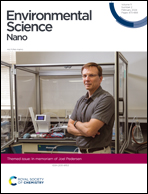Abstract
Infections caused by fungi are emerging global health challenges that are exacerbated by the formation of fungal biofilms. Further challenges arise from environmental contamination with antifungal agents, which promotes environmental acquisition of antifungal resistance. We report the generation of an efficient, sustainable, all-natural antifungal nanotherapeutic based on the integration of an antimicrobial natural essential oil into a gelatin-based nanoemulsion platform. Carvacrol-loaded gelatin nanoemulsions penetrated Candida albicans biofilms, resulting in death of C. albicans cells in biofilms, and displayed selective biofilm elimination without harmful effects on fibroblast cells in a fungal biofilm-mammalian fibroblast co-culture model. Furthermore, the nanoemulsions degraded in the presence of physiologically relevant biomolecules, reducing the potential for environmental pollution and ecotoxicity. Overall, the sustainability, and efficacy of the described gelatin nanoemulsion formulation provides an environmentally friendly strategy for treating biofilm-associated fungal infections, including those caused by drug-resistant fungi.

- This article is part of the themed collection: Nano-bio interactions


 Please wait while we load your content...
Please wait while we load your content...